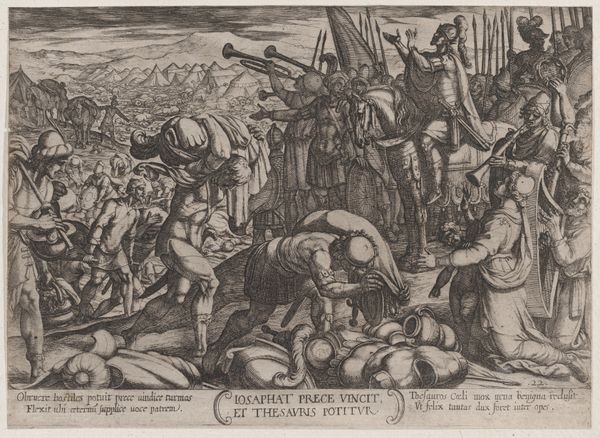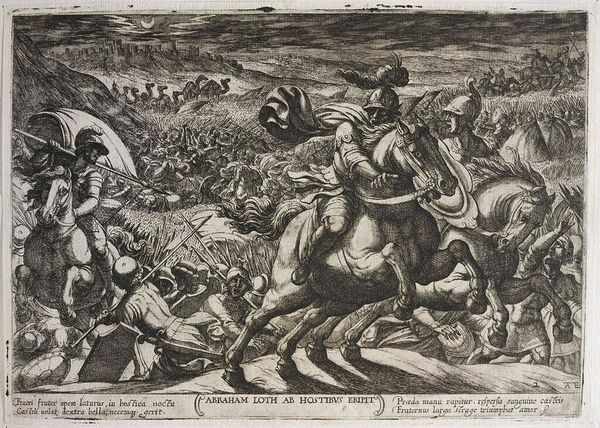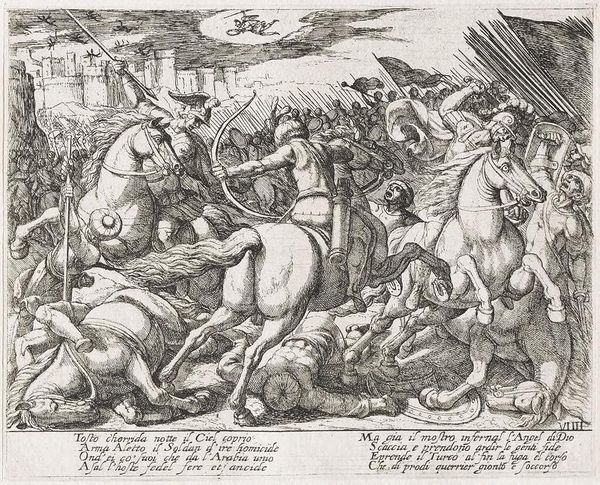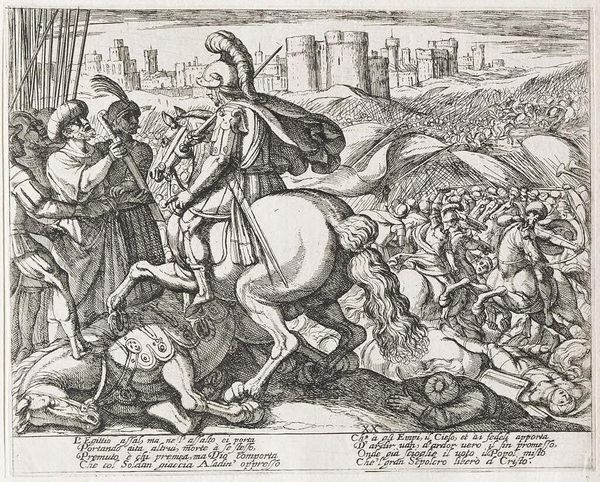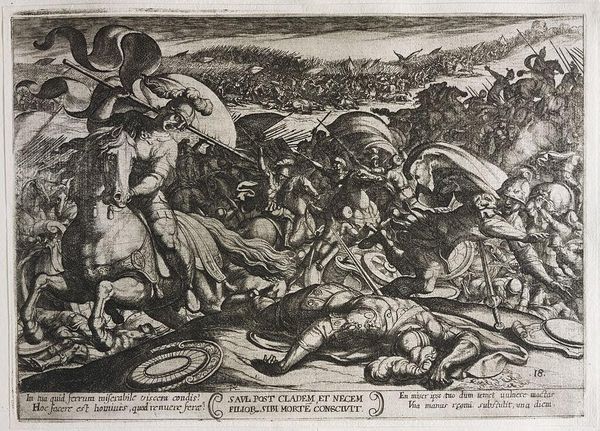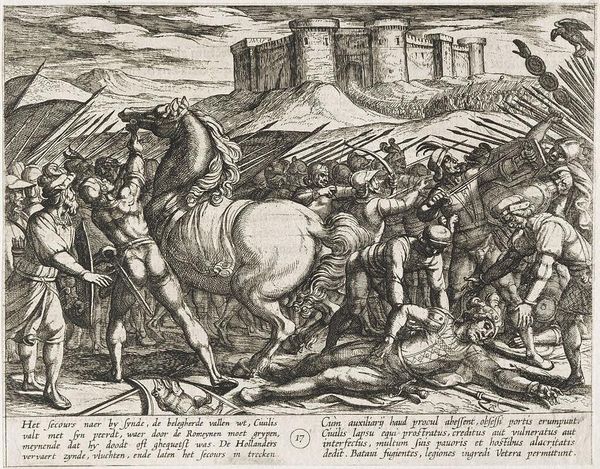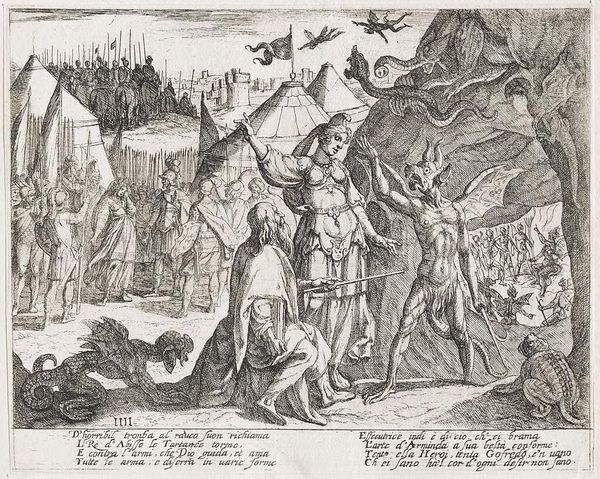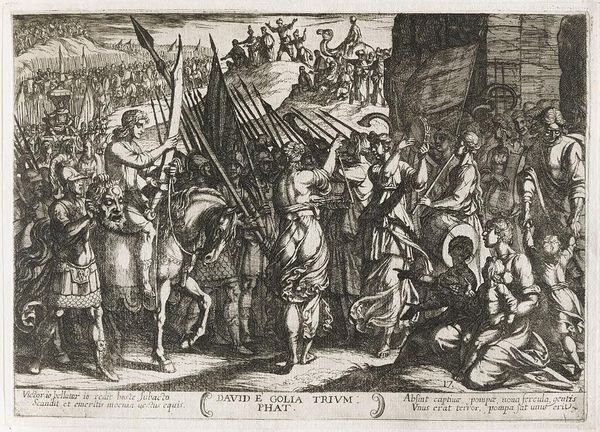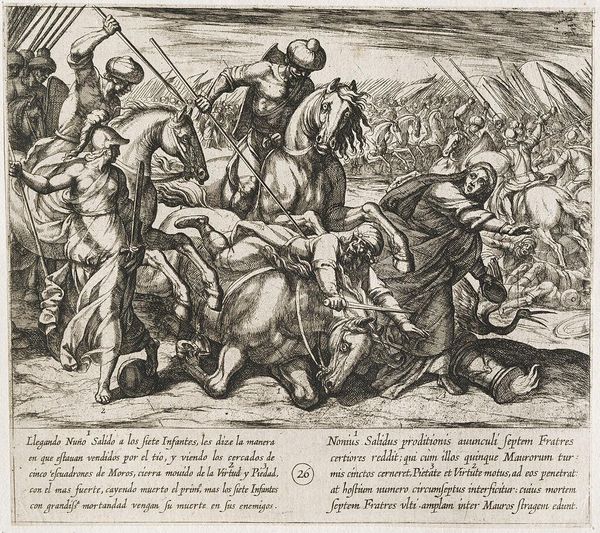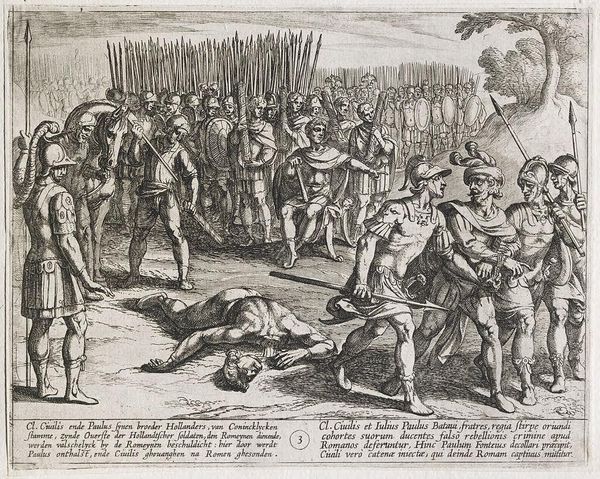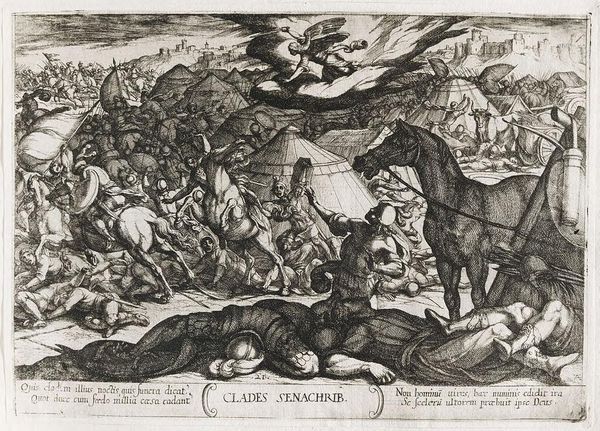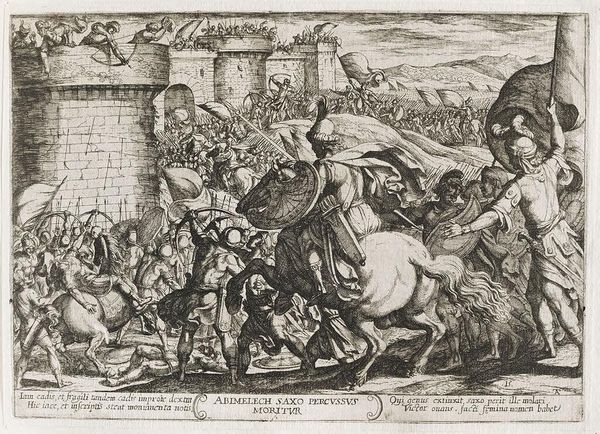
Copyright: CC0 1.0
Curator: There's something almost frantic about this piece. The dense, cross-hatched lines and the sheer number of figures give it a buzzing energy. It's a scene overflowing with, well, with *stuff*. Editor: You're right, there is a density to it. What we are seeing is Antonio Tempesta's print, "Josaphat Thanking God for His Victory," held here at the Harvard Art Museums. Tempesta, who lived from 1555 to 1630, was known for his battle scenes, and this engraving really showcases his skill in depicting large-scale conflict. Curator: Skill, yes, but also, dare I say, a certain… relish? Look at the central figure, arms raised, seemingly exultant amid the chaos. It feels less like piety and more like pure, unadulterated triumph. It makes me wonder, what are we *really* meant to feel here? Gratitude or something else? Editor: That's a great point. The political use of imagery during that period was key. Victory over one's enemies wasn't just a military accomplishment; it was evidence of divine favor. Showing Josaphat's gratitude reinforces that message: obedience brings success. Curator: Maybe. Or maybe Tempesta, with that churning composition, is subtly hinting at the messy, often morally ambiguous reality of war. Editor: Perhaps it's both, really. These images were designed to inspire devotion, but artists often smuggled in their own perspectives. That tension is what makes them so compelling, even now. Curator: Exactly, it's that friction, that unease, that keeps us looking. Editor: I agree, and for me, it underscores the enduring power of art to provoke questions and challenge assumptions.
Comments
No comments
Be the first to comment and join the conversation on the ultimate creative platform.
